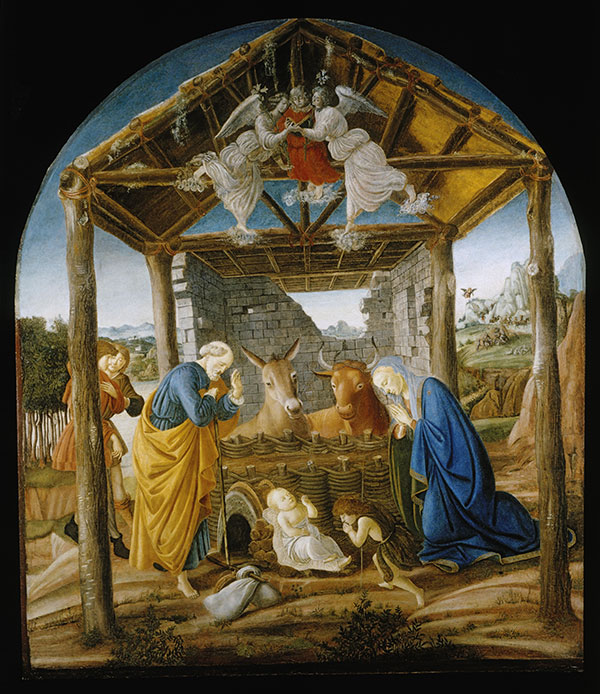 The music associated with the Christmas season has always maintained a special place in the Catholic Church and in the hearts of the faithful. There are many beloved sacred music works linked to this season, from G.F. Handel’s “Messiah” and Arcangelo Corelli’s “Christmas Concerto” to J.S. Bach’s “Christmas Oratorio.” One sacred Christmas Vespers text, however, seems to have captured the imagination of composers through the centuries more than any other: “O Magnum Mysterium.”
The music associated with the Christmas season has always maintained a special place in the Catholic Church and in the hearts of the faithful. There are many beloved sacred music works linked to this season, from G.F. Handel’s “Messiah” and Arcangelo Corelli’s “Christmas Concerto” to J.S. Bach’s “Christmas Oratorio.” One sacred Christmas Vespers text, however, seems to have captured the imagination of composers through the centuries more than any other: “O Magnum Mysterium.”
I was recently reminded of the beauty of this text prior to a Mass at St. Bartholomew Church in Sharpsville, Pa., when their phenomenal and holy priest, Father Matthew J. Strickenberger, was playing the work. As the title “O Great Mystery” suggests, the text describes the great mystery of the Nativity of Our Lord, lying in a manger with animals looking on, and closing with a reference to Our Blessed Lady whose virgin womb bore the Christ Child. While joyful, it is a reserved wonder and almost every composer – regardless of the century in which they lived – has set these words to music that illustrates the mysterious and sacred event.
The most famous is undoubtedly the motet by Tomás Luis de Victoria, a native of Ávila, Spain. His “O Magnum Mysterium,” written in 1572, dates from his employment in Rome as a Church musician. Three years later in the Eternal City, he was ordained a priest. In Victoria’s work, the listener is drawn into the significance of the role of Our Lady by the manner in which he sets “O beata Virgo” (“O blessed Virgin”). The phrase is preceded by two beats of silence immediately prior to enhance the syllabic text setting in homorhythmic texture, meaning there is one note per syllable with the voices sounding the words synchronously. These elements contribute to the textual clarity, to signify the importance of our Blessed Mother.
An example of a contemporary setting is by Pulitzer Prize-winning American composer Dr. Jennifer Higdon. As the composer explained, her setting of “O Magnum Mysterium” resulted from her desire “to create a bit of mystery, which is why wine glasses are a part of the piece.” Like Victoria’s composition, the work is scored for a chorus of soprano, alto, tenor and bass voices, but with texts in both Latin and English complemented by two flutes, chimes and two crystal glasses. The contemporary harmonies are quite different than the Renaissance counterpoint of Victoria, yet the work maintains the beauteous, mysterious nature of the text. A superior recording of the work can be found on the 2005 album “All Is Bright” by the Handel and Haydn Society Chorus.
Father Christopher Bond, pastor of St. Lucien Parish in Spruce Pine and St. Bernadette Mission in Linville, reflects on the text of “O Magnum Mysterium”:
“I find within ‘O Magnum Mysterium’ (in its various haunting arrangements) an extremely simple approach to the birth of Our Lord. So often, we get caught up in the anxieties of Christmas preparations that we fail to slow down to the point of mere marvel that God would humble Himself to enter our world, take on human flesh, and redeem the human person through the blood of the cross. If lowly animals can put their worries on hold and stop to ponder the glorious mystery of the Incarnation, why can’t we?”
As the faithful prepare to celebrate the Christmas season in a simpler way this year, the numerous settings of “O Magnum Mysterium” – in particular, the Victoria and Higdon compositions – can foster quiet devotion in pondering the stillness combined with wonder that defined the very first Christmas.
— Christina L. Reitz, Ph.D., Special to the Catholic News Herald. Christina L. Reitz, Ph.D., is professor of music at Western Carolina University in Cullowhee.
Listen to Tomás Luis de Victoria’s musical setting of “O magnum mysterium” performed by the Cambridge Singers:
‘O magnum mysterium’
O magnum mysterium,
et admirabile sacramentum,
ut animalia viderent Dominum natum,
iacentem in praesepio.
O beata Virgo, cujus viscera meruerunt
portare Dominum Iesum Christum. Alleluia.
O great mystery,
and wonderful sacrament,
that beasts should see the newborn Lord,
lying in a manger.
O Blessed Virgin, in whose unblemished womb
was carried the Lord Jesus Christ. Alleluia!
 Advent is designed to help us prepare for the birth of the Savior, and there’s no better way to do that than with a Jesse Tree.
Advent is designed to help us prepare for the birth of the Savior, and there’s no better way to do that than with a Jesse Tree.
A Jesse Tree is a traditional way of marking the days of Advent – like an Advent calendar, but it traces the family tree of Jesus from Creation to the Nativity. Each day features a different Scripture passage featuring depictions of Jesus’ ancestors or events in the Old and New Testament that point to Him.
It is so named from the prophecy in Isaiah 11:1: “But a shoot shall sprout from the stump of Jesse, and from his roots a bud shall blossom.” Artists’ depictions of the Jesse Tree usually show a tree rising out of a recumbent Jesse of Bethlehem, the father of King David, with branches featuring Jesus’ ancestors as recorded in the Gospel of Matthew and the Gospel of Luke.
(Fun fact: The Jesse Tree is where our representation of a genealogical family tree comes from.)
The Jesse Tree connects our holiday traditions, like putting up a Christmas tree or lighting an Advent wreath, with the history of salvation. On the tree we place ornaments representing the people, the prophecies and events leading up to Jesus’ birth – for example, a burning bush for Moses or a ram for Isaac. There are many variations in the number of ornaments and subjects, with simple sets suitable for very young children to elaborate collections of more than two dozen ornaments.
Making a Jesse Tree is easy. You can use a small Christmas tree, a large branch or a poster as the base on which to hang the ornaments. Find daily Jesse Tree reflections and Scripture verses online – three recommendations are listed below. Each day during Advent, make an ornament to illustrate that verse and hang it on the Jesse Tree.
This activity is particularly fun for families and children, but it’s also good for anyone who wants to connect the Advent season with God’s faithfulness across history.
— Patricia L. Guilfoyle, editor
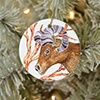
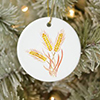
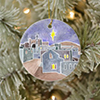
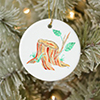
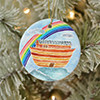
More online
 At holyheroes.com: This Cramerton-based company has a generous collection of free resources in its “Advent Adventure” collection, including Jesse Tree ornament downloadable printables, and daily emails with prayers and short videos explaining each Scripture verse so kids can watch while decorating their ornaments. Bonus free content includes printable ornaments and videos explaining the “O Antiphons.” Holy Heroes also offers for sale a Jesse Tree poster with stickers to post on your fridge, and a Jesse Tree “History of Salvation” Advent Activity Book with coloring pages, puzzles, quizzes and more.
At holyheroes.com: This Cramerton-based company has a generous collection of free resources in its “Advent Adventure” collection, including Jesse Tree ornament downloadable printables, and daily emails with prayers and short videos explaining each Scripture verse so kids can watch while decorating their ornaments. Bonus free content includes printable ornaments and videos explaining the “O Antiphons.” Holy Heroes also offers for sale a Jesse Tree poster with stickers to post on your fridge, and a Jesse Tree “History of Salvation” Advent Activity Book with coloring pages, puzzles, quizzes and more.
 At www.loyolapress.com: Find a series of online reflections for each day of Advent using a Jesse Tree, taken from “The Stories of the Old Testament: A Catholic’s Guide” by Jim Campbell. Each day’s reflection includes links to the Bible verse along with an ornament suggestion. Perfect for older children and adults who want to take a “deeper dive” into Scripture.
At www.loyolapress.com: Find a series of online reflections for each day of Advent using a Jesse Tree, taken from “The Stories of the Old Testament: A Catholic’s Guide” by Jim Campbell. Each day’s reflection includes links to the Bible verse along with an ornament suggestion. Perfect for older children and adults who want to take a “deeper dive” into Scripture.
 At www.catholicculture.org: Find more Jesse Tree ornament ideas for little children, coloring activities, even cookie recipes! Search “Jesse Tree” on the homepage.
At www.catholicculture.org: Find more Jesse Tree ornament ideas for little children, coloring activities, even cookie recipes! Search “Jesse Tree” on the homepage.
Don’t miss this!
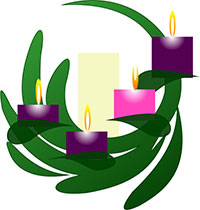 Advent begins on Sunday, Nov. 28, and that date also marks the start of the Church’s liturgical year. Advent (from, “ad-venire” in Latin or “to come to”) is the season encompassing the four Sundays (and weekdays) leading up to Christmas. As you prepare for the season, check out these other stories on catholicnewsherald.com:
Advent begins on Sunday, Nov. 28, and that date also marks the start of the Church’s liturgical year. Advent (from, “ad-venire” in Latin or “to come to”) is the season encompassing the four Sundays (and weekdays) leading up to Christmas. As you prepare for the season, check out these other stories on catholicnewsherald.com:
- “10 facts about Advent”: The season of Advent developed in the Church over time. Here are 10 facts that you may not know about the roots and meanings of the season.
- Blessing for an Advent wreath and Christmas tree: Information from the USCCB on blessing your Advent wreath and Christmas tree
- “The Great ‘O’ Antiphons of Advent”: The Great “O”Antiphons are brief prayers that are chanted or sung from Dec. 17 to 23.

